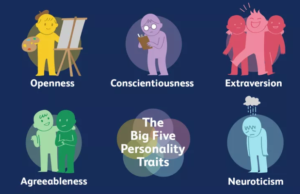Brain\Mind
Musings, news, and research about neurology, brain physiology, psychology, and behavior. Particular focus on Autism, ADHD, and depression.

“Nobody realizes that some people expend tremendous energy merely to be normal”
– Albert Camus

Hi, and first of all, I’m incredibly sorry.
1. I knew I had to leave by 2 pm to get here but my sandwich burned and I didn’t notice until the apartment was full of smoke. I couldn’t leave it for my roommates like that so I had to open all the windows and flap a beach towel everywhere to make it a little better. Anyway, thank you for understanding.
2. As a program note, I did see that this was to be a talk with a slide presentation but somehow I missed the thing about being in PowerPoint so a slight format change will require me to hook up my slide projector. It should only take a couple of minutes and maybe one or two of you could help me move the computer cart to a safe place and find like a table or desk that’s the right height for my projector?
3. I’m sure you can relate, I mean I’m only human, but last week, which I admit would have been the ideal time to be working on this, it was like every time I sat down to get started I’d get just crazy sleepy, like can’t-keep-my-head-upright, sleepy. It was insane, then as it got closer to this week I found myself kind of having trouble thinking about it, and every time I’d try I’d get this sort of anxiety stomach ache. I did manage to get some stuff done though like pick up my bedroom and throw away the old stuff in the fridge. It’s kind of a good feeling. Then the night before last my friend had this thing he wanted me to go to so that only left me last night to pull all of this together.
4. In that light, I think it holds up pretty well. Although full disclosure, I thought the book we had to talk about was kind of up to us so I picked “Cujo”, by the writer Steven King because I read it last Summer. I’m sorry I didn’t do “Of Mice and Men” but at least this is an animal-and-people story too!
5. If I may just say so, turning web pictures into projector slides is just insanely expensive, especially a rush job. Like you would not believe how much these cost my friend. So my first slide is these awesome St. Bernard puppies. Can you even believe how cute they are? And look how big the mom is in comparison! Actually these were the ones that showed up first in image search and there were a ton of this same bunch of puppies doing different stuff although it’s not super obvious that it’s different, because the background doesn’t change.
6. So I think the book Cujo by the writer Steven King is really good and exciting. Question 1 says to talk about the conflict at the heart of the story so I guess the conflict is between this huge killer dog and the people.
7. Question 2 asks me to describe underlying issues that shape the story and I guess that would be like, rabies because everything would have been OK without the rabies.
 “‘Jailer, I’ll tell you an interesting fact. Everything we study, we modify by our study of it. Hence truth eternally eludes us.’
“‘Jailer, I’ll tell you an interesting fact. Everything we study, we modify by our study of it. Hence truth eternally eludes us.’
“He did not look convinced, just held out his hands for the plates.
“‘Take crabs, for example, I said ‘We poke them with a stick to see how they behave, and they behave as if poked by a stick.’
He folded his arms, the plates dangling from his fingertips.
“This is, of course, a very simple example,’ I said. Take a subtler example, such as atoms of light. Light, as you know, is one of the four great elements-in common parlance, fire. We study it by bouncing it off polished stones, or bending it in water, or squeezing it through holes. And how does it behave? It behaves as if bounced or squeezed or bent. We learn nothing, we merely cause events.’ I bent closer to him, waving my finger to keep his attention. ‘Has it occurred to you that sundials do not measure time, but create it?’ It had not, I saw. Time,’ I said,’is actually a thing, like porridge.’ I folded my arms and beamed at him, triumphant. The left side of his mouth twitched very slightly. He withdrew.”
From The Wreckage of Agathon, John Gardner – 1970
Pareidolia: A sensory stimulus which is interpreted by the mind as something else. Most famously the faces seen in teapots, trucks, garbage cans and clouds; Jesus on a piece of toast, the cloud that looks like a bunny etc, etc. But also such experiences as being in the shower and in the sound of the running water, hearing your phone or the doorbell ringing.
Besides being funny, these pictures are evidence of two things about us.
- That we all do this, at all times, using whatever sensory data is in front of us. Therefore we are screening all incoming data through a human flavored filter. The sense info here is almost aggressively packaged in human frames. None of us are objective observers, none of us ever will be.
- That it’s similar enough between the random millions of us that we see the same visual punchline almost effortlessly. This automatic consensus supports theories about inner archetypes and symbols, about universals of expression, posture, and gesture. They suggest that the architecture of these inner libraries is innate.
In computing, algorithms are an unambiguous set of instructions like: 
- go in the house
- hang up your coat
- sit down
But what if I have a problem getting in the house? What if the door is locked? If/Then subroutines are context dependent algorithms allowing for variation without failure.
- find key
- use key to open door
But what if I can’t find the key? As the story plays out, deeper levels of algorithmic problem solving are exposed to rescue us from a dead end.
- search for key
- in pockets
- on the ground
- in the car
You can probably imagine further subroutines and variances to each step. And all this for something that only comes up in the rare case of being locked out of the house.
When enough such related algorithms are grouped together usefully, they can become the human version of a program or app, ready to run when needed. We all have tons of garden variety apps installed, some are innate and essential and some are highly individual choices.
Global Apps
The opening example of being locked out isn’t an app by itself but it shows one at work. I call this one the”What-If” app, and I consider it to be a part of the Human Operating System (or HOS) which is a very important sounding thing I made up one day to refer to the totality of our preprogrammed behavior. If the troubleshooting steps made sense as you were reading them it’s because you actually have this “What-If” program in your head and use it regularly. We never think of it in the abstract this way, as an always running background app. We never think of it at all because we rely upon this internalized application to appear with some answers the instant it is needed. The framework delivering those answers is as taken for granted as having a hand to pick up a cup. This program deconstructs any problem and triages potential solutions to create an “order of operations” that determines the most logical first step and then orders the cascade of “If-Thens” by logical position and least effort required to succeed. An example is the old tech support truism of starting with the question “Is it plugged in?” We briefly touch base with this app hundreds of time a day whenever “Uh Oh, what if ?” thoughts arise. Often these thoughts and the suggested reactions are so short-lived that we don’t even notice them happening. In stressful situations, we can sometimes better observe the process in action as we focus on a particular worry. A decision tree forms in your mind and the outcome branches order-rank themselves from likely success to likely failure. What-If is like an indefatigable Jeeves to our fretting Bertie Wooster. While the “What-If” app comes installed in every human being, the quality of the program varies with individual common sense and can be impacted by the “having a shitty day” phenomena, which is known to affect decision making. It is also a perfect amoral slave to any sort of nonsense or evil we are pursuing, the mad scientist and the selfless philanthropist rely on it equally to achieve their ends.
Mutually Dependent Apps
If a person had never used a key on a locked door or even seen another person use a key, they wouldn’t have the introductory example with its various sub-responses already in place. Decision trees need solid ground to grow. Our keyless protagonist has the WI program though, and it would fall back to a more general level of What-If. What if you arrive at your destination and you mysteriously can’t enter? When What-If hits this sort of new blank problem, conscious effort and even struggle are required to establish the baseline realities and possibilities. If you had no help, coming up with the idea of a key would be comparable to a minor scientific breakthrough. It’s a good thing we have the “What the Hell is Up with That” app, aka WHUT to tinker with mysteries, develop theories about them and update those theories as needed. WHUT creates the conceptual givens that What-If needs in order to work.
Eventually, sufficient familiarity with the basics of the situation and frequent practice will transform the skill into an autopilot function that no longer requires conscious effort and doesn’t interrupt us to stop and think about it anymore. This silent efficiency is a trait of well-integrated apps. A frequent partner to What-If and WHUT is an essential global app I’ll call Gleaning Useful Information from Everything, obviously known as GUIE. This foundational human app is always adding to its database of potentially important knowledge and it doesn’t always require direct personal experience. I would guess that most of us have successfully dealt with at least one situation based on information gathered from television or the internet. This was GUIE handing off useful ideas to What-if, who shoots and scores. One of the most essential, always on, global apps is “Endlessly Scanning for Danger” (ESD) which often triggers the “What-If” app to generate getaway or fight back plans. Usually, these plans aren’t needed as many danger signals turn out to be false alarms. Those getaway plans evaporate instantly when we get confirmation of a false alarm but just imagine how many of these survival scenarios your brain has generated and trashed over your lifetime. Global apps like these aren’t chosen, they come pre-installed as modules of the HOS because we could not function without them.
But many human skills are chosen and often for deeply personal reasons to express our souls or achieve our goals.
Specialty Apps
We can learn a huge variety of specialty programs like driving a car, performing brain surgery, cooking a dessert or dancing ballet. Continue reading
I have a theory that the reason that many different neurological types maintain consistent percentages per capita year after year is that somehow it’s useful for constructing human communities. As an incomplete example, I’m talking about:
- High functioning sociopaths (cold-hearted leader/organizer types) 4%
- Bipolar disorder (frequently leaders or very creative) ~2.6%
- Autism Spectrum (technological and scientific innovation) 1.7%
- ADHD (novelty generators) 5% to 11%
- Schizophrenia (visionary thinking in any discipline) 1%
I’m not certain how the predictable gay and lesbian* population percentages factor into this exactly but as a guess, they have historically not been focused on raising children. As a predictable percentage of the population not absorbed in raising families and often positioned as outsiders in their own surrounding cultures, they would almost guarantee the existence of an alternative subculture where they might generate new ideas not approved of by our final group. 3.5%
Everyone else is good old standard human stock who mostly just want family and security. I think the neurotypical brain which defines this group, is every bit as much a specialized filter as the atypical types mentioned above, it is simply specialized to keep things simple and inside the comfort zone. They respond to social pressure far more seriously than atypicals which makes them a kind of cultural cement. Neurotypical breeders are the low center of gravity for every community that ensures stability. They are neither better than our atypicals, or worse, they are the dominant percentage because life wants a solid base to grow from. There are three structural divisions in this last group. ~90%
- Male and female. ( the transgender variations and shadings of male and female are very small in number compared to “standard issue” they might be classed with the gay and lesbian populations for our purposes. 0.3%) There are obvious cultural roles and practical roles determined here. One astounding but well-documented fact is that during and after wars, a higher than average number of boys are born. The mechanism driving this effect has no useful model within current science but the reason for it is easily understood: “I guess we better make a few more boys to cover losses”. Whatever the mechanism is, it perceives large events at a community level… and adjusts via individual pregnancies. Males ~51.9% Females ~49.1%
- Progressive vs conservative viewpoint, which is strongly linked to personality type metrics and as I’ve explored elsewhere in this blog their “Tension force” creates the defining zeitgeist of every culture. In a polling in June 2010, 40% of American voters identify themselves as conservatives, 36% as moderates and 22% as liberals, with a strong majority of both liberals and conservatives describing themselves as closer to the center than to the extremes (Wikipedia).
- Age-based focus and attitude within the general population. From child to teenager to young adult to middle-aged to elderly there is a predictable staged transition through age-based societal roles***: Student, soldier, young married, worker, settled parents, judgemental elders. In a way, this echoes the division of labor within bee and ant colonies. How do they decide what job to do? As the individual insect ages, it progresses through a series of preset “vocational” roles within the hive. For humans, the most basic example of the age-based behavior difference is the openness of the young to change and the resistant defensiveness of the old. This mechanism makes a cultural shift possible, then limits the amount of change.
According to my half-assed theory, being Neuro-Atypical or sexually atypical is not a random failure to create a normal person. Rather it is a structural role predictably of some benefit to the general population. That would explain why the percentages of these varied types are so reliable. Everyone from the most boring normal person to with wildest transgender bipolar radical conservative has a structural purpose in the diverse needs of the human hive. This points to a real-time reproductive algorithm affecting the population as a whole and somehow sensitive to such temporal events as war. It would be no shock if such a mechanism exists, for it to show other concerns about population balance necessary to keep the community organism in good repair. We see a similar balancing mechanism in other hive creatures. In a sense, it’s like a body generating replacement cells of the right kind as needed.
- * I’m not claiming to have discovered an atypical neurology specific to gays and lesbians. They are here because their population percentage is very consistent over time and they tend to occupy a unique reality niche.
- ** I’m not mistaking transgender folk for gay or lesbian. I’m just placing them in a sex/gender outsiders group.
- *** William Shakespear on this preset aging process:
At first the infant, Mewling and puking in the nurse’s arms; And then the whining schoolboy, with his satchel And shining morning face, creeping like snail Unwillingly to school. And then the lover, Sighing like furnace, with a woeful ballad Made to his mistress’ eyebrow. Then a soldier, Full of strange oaths, and bearded like the pard, Jealous in honor, sudden and quick in quarrel, Seeking the bubble reputation Even in the cannon’s mouth. And then the justice, In fair round belly with good capon lined, With eyes severe and beard of formal cut, Full of wise saws and modern instances; And so he plays his part. The sixth age shifts Into the lean and slippered pantaloon, With spectacles on nose and pouch on side; His youthful hose, well saved, a world too wide For his shrunk shank; and his big manly voice, Turning again toward childish treble, pipes And whistles in his sound. Last scene of all, That ends this strange eventful history, Is second childishness and mere oblivion, Sans teeth, sans eyes, sans taste, sans everything.
This test is the most commonly accepted accurate measure of basic personality. These metrics are used in countless psychological studies. In some of my writing, I need to refer to the Big 5 and wanted an easily found reference.
Many researchers believe that there are five core personality traits.
- Openness
- Conscientiousness
- Extraversion
- Agreeableness
- Neuroticism.
These “big five” are broad categories of personality traits. The test results show you as low or high in each area. Your basic personality type can be understood as the mix of all these traits at the high or low levels measured in the test.
These five categories are usually described as follows:
I’ve seen this before, but just thought of it again. A well intended typical interviewer chats with a housewife who has volunteered (after undergoing a battery of psychological tests) to be observed while experiencing LSD.
She quickly begins the classic, indescribable stages of the LSD journey while being asked to translate it back into the word economy. If you’ve been in her shoes, you know that this is like being asked to communicate with gravel.
She absolutely lights up and you can see her confidently and joyfully finding the ordinary world transformed with meaning and beauty. It’s lovely to see her surprised pleasure. She’s a normal nice looking person at first but she becomes radiant. The part with her takes about 5 minutes. It’s the good part. Then there’s a bit you might or might not care about.
I’m so grateful for my psychedelic experiences, I couldn’t appreciate much of anything as much as I do, if i had not had them. I find myself longing for another taste despite the fact that they can be intimidating. It’s a big place to go with information that normal me can find overwhelming. It’s a bit like if you really believed in an awesome god and you had a mechanism to hear him…you wouldn’t pull that switch lightly…or every day.
I think it’s heartbreaking that psychedelics were lumped with uppers and downers and the only access became through manufacturers outside the law. If you liked uppers and downers you could be certain someone was making enough of those for the universe of self medicators aching to go up or down.
But Psychedelics are reality medicine, the sideways elevator to the sacred hilltop in the wind…It’s not usually crowded up there.
I want to go back.
There’s a lot of important information about human happiness waiting to be learned from some molecules wrongly placed on the “Evil things” shelf long, long ago.

